Case Studies.
Add Case Study
Our Case Study database tracks 22,657 case studies in the global enterprise technology ecosystem.
Filters allow you to explore case studies quickly and efficiently.
Download Excel
Filters
-
(6,653)
- (2,601)
- (2,127)
- (945)
- View all
-
(5,642)
- (2,469)
- (1,692)
- (826)
- View all
-
(5,571)
- (2,178)
- (1,766)
- (643)
- View all
-
(5,247)
- (2,179)
- (1,715)
- (1,321)
- View all
-
(2,881)
- (1,448)
- (574)
- (376)
- View all
- View all 15 Technologies
- (1,985)
- (1,985)
- (1,915)
- (1,679)
- (1,629)
- View all 42 Industries
- (8,728)
- (4,742)
- (3,618)
- (3,233)
- (2,947)
- View all 13 Functional Areas
- (3,304)
- (2,787)
- (2,603)
- (2,006)
- (1,630)
- View all 129 Use Cases
- (13,581)
- (5,296)
- (4,272)
- (3,520)
- (2,856)
- View all 9 Services
- (504)
- (432)
- (416)
- (382)
- (301)
- View all 1083 Suppliers
Selected Filters
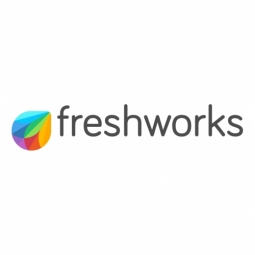
|
Finsure's Transition to Freshdesk: Enhancing Efficiency and Achieving a 94% SLA
Finsure, a rapidly growing mortgage aggregator in Australia, was facing a significant challenge in managing its broker network. The company relied heavily on email as the primary communication channel with its network of over 1550 brokers. However, the use of multiple shared inboxes to respond to brokers' queries and requests was proving to be inefficient and unmanageable. The sheer volume of incoming queries often caused their email client to crash, negatively impacting employee performance. The Commissions team, responsible for managing broker remuneration, was particularly affected. They were struggling to perform their day-to-day operations efficiently due to the sensitive nature of their conversations and the high volume of queries. The management at Finsure realized that shared inboxes were not a scalable solution and began looking for alternatives.
|
|
|

|
Fitness Passport Streamlines Operations and Reduces Queries with Freshworks
Fitness Passport, a corporate health and fitness program in Australia, was facing several challenges in its operations. The organization was struggling with inaccurate data and reporting, which hindered their ability to make critical business decisions. The lack of insights was a significant issue as it prevented them from understanding what was working for their members and what wasn't. Additionally, there was a lack of cross-team collaboration, which was affecting their efficiency and productivity. The organization was also dealing with a high volume of routine queries, which was taking up a significant amount of their resources. The legacy Salesforce solution they were using was not providing the reliability and capabilities they needed.
|
|
|

|
Katz Media Group Enhances ITSM Processes with Freshworks During COVID-19
Katz Media Group, the largest media representation company in the United States, faced significant challenges with its IT service management (ITSM), service delivery, and IT support. The company's legacy platform was not user-friendly, leading to knowledge silos and a lack of uniform ITSM processes and service SLAs. The incumbent on-premise ITSM solution was becoming a bottleneck, hindering integration, migration, and standardization of IT service and incident management. This situation was part of a broader technology transformation initiative that Katz was undertaking. The company needed to overhaul its existing functionality and improve scalability, which required a new solution to replace their incumbent on-premise solution.
|
|
|

|
Koti Puhtaaksi's Transformation Journey with Freshdesk Towards Becoming Finland’s Largest Cleaning Company
Koti Puhtaaksi, a dynamic family-run business in Finland, had an ambitious plan to become the largest Finnish cleaning company. However, the company's existing customer support system was becoming a hindrance to this goal. The support system was segmented into three divisions, with customer interactions across all three groups conducted largely through email and phone. As a result, there was no single repository where past conversations could be recorded and accessed. Only the agent who had spoken with the customer would have context into the customer’s problem. With the number of agents and volume of customer queries steadily increasing, this system was no longer effective. Furthermore, with customer queries pouring in from different channels, the support team needed a single solution to streamline the customer journey and increase visibility of the various touchpoints.
|
|
|

|
Enhancing Safety and Communication in Tunnel Construction with IoT: Ausgrid’s CityGrid Project
Ausgrid, Australia’s largest public utility, embarked on an ambitious $800 million upgrade project, codenamed CityGrid, aimed at supplying sufficient power to Sydney’s central business district through 2024 and injecting extra backup capabilities into the power grid for optimal future reliability. The project involved constructing up to four new interconnected substations, replacing and upgrading key high-voltage cables, and adding a new 8-kilometer City East tunnel. During the construction process, teams were working up to 55 meters below the surface, and maintaining open communication between the maintenance staff and teams working deeper within the tunnel was a challenge. Ausgrid used a simplex radio channel via the New South Wales Government Radio Network (NSWGRN) for this purpose, but this method had major drawbacks and limitations. It drew maintenance staff away from their daily monitoring and repair duties, forcing them to rely on land lines, escorts, and face-to-face meetings to connect with tunnel construction teams.
|
|
|
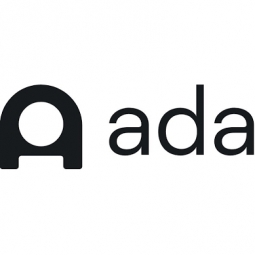
|
Grab Enhances Customer Experience with Multilingual Automated Messenger
Grab, a super-app company, was facing a significant challenge in managing the high volume of digital brand interactions. The customer service agents were unable to address the requests in a timely manner, leading to a backlog. The company needed a cost-effective solution to address customers' questions as quickly as possible and maintain customer satisfaction. The challenge was to build and launch a scalable automated experience on Facebook Messenger that could handle the high volume of customer interactions.
|
|
|

|
Digital Transformation Accelerates Time to Market and Boosts Revenue
A prominent US-based software company was grappling with bandwidth issues in resource allocation, managing various partners, and executing its product roadmap. The company's disjointed management approach led to the release of generic campaigns that lacked personalization. Balancing work priorities among different stakeholders resulted in increasing dependencies and delays. The company aimed to migrate to the cloud for scalability and improved data-driven decision-making capabilities. It also sought to reduce overall infrastructure costs, centralize disparate smaller teams, and deploy a third-party personalization and experimentation platform. To achieve these goals, the company partnered with Cognizant for a digital marketing transformation and the selection and deployment of a personalization platform.
|
|
|

|
Banco Bolivariano's Digital Transformation: Automating Customer Service with AI
Banco Bolivariano, a leading bank in Ecuador, faced the challenge of keeping up with the digital revolution that has swept across all industries, including the banking sector. The bank was used to rigid and bureaucratic processes, and adapting to the rapid changes was a significant challenge. The bank set ambitious goals in 2017 to lead the Ecuador banking sector, provide an innovative customer experience, maintain service effectiveness above 80% in high traffic without using additional resources, and grow the implementation of products for new customers while diversifying the product portfolio for existing customers. The challenge was to meet these goals while providing fast and simple answers to customers at any time and through any channel.
|
|
|

|
Revolutionizing HR Challenges in a Global Venture Capital Firm with IoT
Accel, a leading venture capital firm, faced unique HR challenges due to its complex organizational structure and the need to manage a large volume of inbound profiles. The firm's HR administrative tasks were being tracked manually, making the process inefficient and prone to errors. Accel receives around 50-60 inbound profiles daily, including those of senior professionals and industry experts. While these profiles may not always find opportunities within Accel, they could be suitable for Accel's 140+ Indian portfolio companies. However, maintaining these inbound resumes in Excel sheets and Google Drive was chaotic and unmanageable. The firm needed a solution that could seamlessly integrate and share all the information with their portfolio companies. Additionally, aligning the entire team on a single HRMS platform suitable for both internal and external usage was a significant challenge.
|
|
|

|
AWM Electrical Enhances Customer Support with Freshdesk
AWM Electrical, an Australian Electrical Wholesaler, was facing challenges in managing large volumes of emails across multiple accounts. The company had set up several email addresses for different teams including projects, purchases, sales, and other office branches, each receiving an average of 50-100 emails a day. This led to cluttered inboxes, making it difficult for the support teams to manage end-user requests. As a result, customer requests started slipping through the cracks, eroding the trust between customers and the company. The company was using Outlook to organize and respond to customer requests, but the system was not scalable with the business growth, leading to slow turnaround times and disappointing responses to priority requests.
|
|
|

|
Campaigntrack's Transformation: Achieving 60% First Contact Resolution with Freshworks
Campaigntrack, Australia’s largest real estate marketing company, faced several challenges in its customer service department. The company initially relied heavily on individual agents for support, primarily via phone and email. However, as the company grew, this structure proved unsuitable due to the dependency on individual agents, leading to issues when they were unavailable. To address this, Campaigntrack tried creating agent groups to handle issues, but this led to difficulties in coordination, especially when the team was not in the same location, resulting in missed inquiries. Furthermore, there was a lack of transparency regarding the team's activities and workload balance. The company was also receiving a high volume of phone calls, approximately 8000, which needed to be reduced and distributed more evenly across other channels such as email and self-service.
|
|
|

|
Mindvalley's Success with Instagram Automation: A 522% Increase in Masterclass Sign-Ups
Mindvalley, an ed-tech company, was facing a challenge in driving up lead acquisition for its masterclasses. The company was primarily dependent on swipe up stories and link in bio to drive people from awareness to the masterclasses. With over 1.3 million Instagram followers, the company was receiving a large number of direct messages about its masterclasses. The team was looking for a solution to respond to these messages more quickly than manually answering them. The goal was to use Instagram Automation not only to increase masterclass sign-ups but also to provide a more personalized experience for followers and drive more engagement.
|
|
|

|
Revolutionizing Dynamic Pricing with Pricemoov and Dataiku
Pricemoov, a yield management solution provider, faced a significant challenge in handling and cleaning data from old SI systems, Oracle, or MySql. The data was dirty and required a full-time developer to perform long ETL (extract-transform-load) steps in PHP for cleaning. Once cleaned, the datasets were painstakingly entered into a model, as they were custom-built pipelines. The replication and deployment process for the next customer was taking weeks. This slow and inefficient process was hindering Pricemoov's ability to provide optimal pricing suggestions and solutions to its customers in a timely manner.
|
|
|
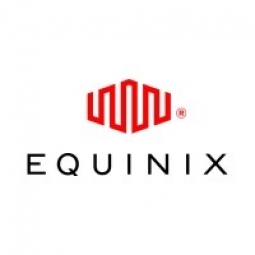
|
IoT-Driven Predictive Maintenance: Siemens' Real-Time Data Solution
Across Europe, billions of Euros are being invested in upgrading rail infrastructure with the aim of carrying more passengers, on more trains, more regularly, with on-time arrival, at a lower cost. Siemens, a leader in engineering solutions for the rail industry, is at the forefront of this transformation. The company uses data collected from over 300 sensors on each train, combined with historical data, to predict when components might fail. This IoT-driven approach, dubbed the 'Internet of Trains', ensures greater uptime for train operators, fewer delays for passengers, and more cost-effective maintenance. However, the challenge for Siemens lies not in the collection, but in the storage, management, and analytics of this vast variety of data. Furthermore, as an international company, Siemens must ensure that the data is stored according to local laws in the most cost-effective way possible.
|
|
|

|
Revolutionizing Catastrophe Risk Modeling: A Case Study of Simplitium and Equinix
Simplitium, a UK company delivering ModEx, a catastrophe risk modeling platform for the (re)insurance industry, faced a significant challenge. The industry had been relying on outdated technology for the better part of three decades, using resource-heavy, legacy in-house hosting systems. These systems were used to analyze risks and potential damage of events such as natural catastrophes, helping (re)insurers calculate the financial implications to ensure they have enough capital to pay the claims and remain solvent. However, as cloud and hosted environments developed significantly, these legacy systems became increasingly inefficient and costly. Simplitium needed a reliable colocation partner with a strong presence in the insurance sector to help grow its customer base. They required a solution that would offer clients faster roll outs, lower costs, and zero downtime.
|
|
|

|
Riyad Bank's Digital Transformation: Attracting Top Talent with iCIMS Talent Cloud
Riyad Bank, one of the largest financial institutions in Saudi Arabia, was undergoing a company-wide digital transformation. The aim was to automate and energize processes, from customer experience to the recruitment process. This required not only better tech solutions but also attracting and hiring top tech professionals. The bank was facing the challenge of streamlining its recruitment process to attract top talent and stay ahead of the competition. The traditional recruitment process was time-consuming and less efficient, making it difficult to attract and hire the right candidates.
|
|
|

|
Specsavers: Cutting Ad Spend by 70% with iCIMS Marketing Automation
Specsavers, a global optician with a 51% market share, was facing a significant challenge in its growth strategy due to the scarcity of both new and experienced talent in the healthcare sector. The competition for healthcare talent was becoming increasingly difficult, posing a major risk to the company's expansion plans. Specsavers had an existing database of candidates but lacked an effective way to engage these candidates and identify those interested in applying for a role. The company needed a solution that could tap into this database and refresh it, a key strategy in recruiting top talent in a competitive job market.
|
|
|
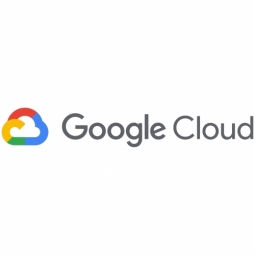
|
Autofleet: Leveraging Google Cloud for Sustainable Fleet and Mobility Operations
Autofleet, a leading solution provider for fleet and mobility operators, was faced with the challenge of offering its customers a platform that was secure, reliable, and scalable. The company provides solutions for asset-heavy fleets and mobility operators to optimize their operations and launch new on-demand ride services. The comprehensive and modular nature of the company’s solutions meant that reliability, security, and performance were crucial to its operations. Failures and downtime could have a negative impact on their customers' core businesses. Furthermore, the company needed to be able to scale at will and with little notice. Whenever Autofleet signed a new client, the platform was immediately subjected to high volumes of extra traffic, which posed a significant challenge.
|
|
|

|
Avanza: Enhancing Collaboration and Leveraging APIs with Google Cloud
Avanza, a leading business process outsourcing (BPO) provider in Spain, faced several challenges in its operations. The company, which offers a wide range of services from retail operations to human resources to call center support, had to maintain efficiency while dealing with the cyclical nature of the BPO sector and tight margins. With over 7,000 employees spread across six countries, Avanza struggled with collaboration and communication, largely due to its outdated email platform that led to siloed working and the burden of maintaining its own servers. Furthermore, Avanza wanted to incorporate machine learning and artificial intelligence into its business solutions, but its existing IT infrastructure was not equipped to handle these advanced technologies. The company was at a crossroads in 2016, deciding whether to continue with its current platform or explore new options.
|
|
|

|
Balgrist Campus: Enhancing Low-Back Pain Research with Google Cloud
Balgrist Campus, an internationally renowned research institute for musculoskeletal issues, was facing challenges in expanding its research on lower-back pain. The Integrative Spinal Research (ISR) group at the campus was gathering data from patients across a broad range of symptom durations, using an on-premises cloud setup linked to a network of supercomputers to process and analyze the information. However, this setup had limitations. The growth of the ISR research team and the success of their projects presented problems, including the need for more workstations and increased computing power. The expense of purchasing additional infrastructure and the desire for a more cost-effective solution led the team to seek alternatives.
|
|
|
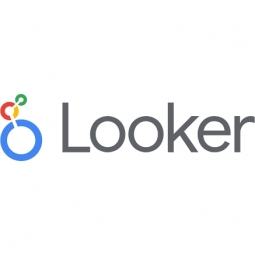
|
Banco BV's Transformation: Cost Savings and Efficient Cloud Management with FinOps Framework
Banco BV, one of Brazil's largest private banks, was seeking to drive technological innovation more effectively. A significant part of this journey was migrating its infrastructure to Google Cloud from another cloud provider for more flexibility and improved asset allocation. The bank's long-term goals with Google Cloud included using data intelligence to transform customer experience, increasing the potential of open platforms, creating new digital products, and refining the company's data science models. However, the bank faced the challenge of building a team to implement a FinOps culture, which involves adopting financial management best practices for its technology infrastructure. This was crucial as Banco BV was increasing its investment in digital and strategic evolution and needed enhanced cost visibility to create cost optimization and reallocation processes.
|
|
|

|
Band Aid 30's Successful Deployment on Google Cloud Platform
Band Aid 30, a global philanthropic initiative aimed at raising funds for Ebola relief, was faced with the challenge of organizing a live performance featuring dozens of top music artists. The project was to be executed in less than 14 days, with a small team of two web developers, Mukesh Randev and Jonathan Horne from Adtrak, a UK-based media agency. The task was to deploy a website that could handle heavy traffic from millions of followers of the participating artists. The website was to be hosted on Google Cloud Platform, a platform that was relatively new to the developers. The challenge was to ensure the website remained online and could handle the anticipated heavy traffic, while also being cost-effective.
|
|
|

|
Banlinea: Leveraging Google Cloud for Innovation in Colombian Financial E-transactions
Banlinea, a Colombian fintech company, was in search of robust technologies to leverage data for its digital transformation and online sale of financial products. The company aimed to change people's lives by helping them make better financial decisions. To achieve this, it needed to understand users' behaviors using digital tools. However, it was critical for Banlinea to have a robust infrastructure that provided the necessary security and certifications to assure its customers. The company also needed the ability to scale its products globally and required new data analysis tools to detect patterns from people's behaviors to develop products that meet their financial needs. Furthermore, Banlinea needed a technology that was not limited to a single type or brand, allowing for versatility, capacity, and scalability regardless of the increasing number of simultaneous customers. Business challenges included quick responsiveness in the development of its products, timely delivery of information, and a high level of security.
|
|
|

|
BasisAI: Accelerating AI Adoption with Google Cloud
BasisAI, a company that helps enterprises accelerate AI adoption, faced several challenges in its mission to deploy responsible AI applications. The company needed to ensure that the AI systems it helped develop were free of biases, which could potentially lead to loss of consumer trust if certain groups of customers were favored over others due to AI system biases. The process of taking AI from code to production required a tight collaboration between data scientists and DevOps within an organization, which could be complex and time-consuming. Additionally, managing the infrastructure for machine learning operations (MLOps) was a significant burden, particularly in terms of resource allocation and dealing with traffic spikes. BasisAI also needed to ensure robust monitoring of AI models to prevent downtime and manage cloud consumption costs. Finally, ensuring data privacy and security was crucial, especially for customers in regulated industries.
|
|
|

|
BE International's E-commerce Application Redevelopment for Cloud with Google Cloud and Matrix Connexion
BE International, a direct marketing company, faced significant challenges with its e-commerce application, BE4U. The application was initially built on a monolithic architecture, which began to show its limitations as the company's membership base and transaction volume increased. Three major events - flash sales, new product launches, and month-end transaction processing - would cause the application to shut down, leading to a chaotic situation where invoices had to be manually generated. This not only jeopardized the company's image and sales revenue but also led to numerous complaints from members. The company needed a solution that could handle high traffic without compromising performance, allow the in-house team to focus on development rather than infrastructure issues, and improve overall member and customer experiences.
|
|
|

|
Beryl: Leveraging IoT and Google Cloud for Sustainable Urban Mobility
Beryl, a leading micromobility company in the UK, was faced with the challenge of ensuring its bikes, e-bikes, e-cargo bikes, and e-scooters were available at the right places and times to meet customer demand. The company aimed to encourage people to switch to sustainable transport to reduce traffic congestion, carbon emissions, and improve mental and physical health. However, to achieve this, Beryl needed a reliable, glitch-free customer-facing app and fully functioning vehicles. The company also needed to manage and analyze the vast amount of data generated by docking stations, vehicles, users, logistics teams, and maintenance crews to continuously improve its service.
|
|
|

|
BigChange Apps: Enhancing Mobile Workforce Productivity with IoT
BigChange, a company launched in 2013, has been instrumental in monitoring and managing over eight million jobs and tracking driving miles equivalent to over 100,000 trips to the moon. However, they identified a significant challenge in the industry. Many traditional companies requiring fleet and workforce management were wasting time, money, and fuel managing their mobile workforces due to reliance on outdated technology, manual reporting, or paper-based systems. BigChange aimed to build a system that would eliminate many of these antiquated processes, thereby improving efficiency and productivity.
|
|
|

|
Birlasoft's Successful Migration to RISE with SAP on Google Cloud
Birlasoft, a global enterprise IT solutions leader based in India, was faced with the challenge of migrating its own SAP systems from on-premise to the new cloud-based RISE platform. This was a necessary step for Birlasoft to gain firsthand knowledge of the solutions it offers and provide best-in-class RISE transformation to its clients. The migration required selecting a public cloud hosting infrastructure that offered unlimited scale and agility to fully utilize the power of RISE. Birlasoft considered various providers before deciding on SAP on Google Cloud, a custom solution of Google Cloud to build, deploy, and manage SAP systems. The decision was influenced by Google Cloud's world-class compute capabilities, secure infrastructure, and intelligent cloud tools for machine learning and artificial intelligence transformation.
|
|
|

|
BK Medical: Leveraging Google Cloud to Optimize Ultrasound Device Manufacturing
BK Medical, a manufacturer of ultrasound devices with operations in Denmark and the United States, faced a significant challenge when it decided to separate from its parent company. The company had been running SAP applications in-house with on-premises servers. The divestiture necessitated the separation of its data and systems, which presented an ideal opportunity to transition to cloud-based IT. However, the company needed to maintain its own data center while minimizing capital expenditure and reducing its on-premises footprint. The challenge was magnified due to the complexities of manufacturing and distributing medical devices globally, which included compliance, data and process management challenges, distribution, resource planning, and customer experience complexities.
|
|
|

|
Aerospike Achieves One Million Writes Per Second on Google Compute Engine with Just 50 Nodes
Aerospike, an open-source, flash-optimized, in-memory NoSQL database, was looking to push the boundaries of Google's speed on Google Compute Engine. The challenge was to meet high throughput, consistently low latency, and real-time processing, which are characteristic of future cloud applications. The team at Aerospike was inspired by Ivan Santa Maria Filho, Performance Engineering Lead at Google, who demonstrated 1 Million Writes Per Second with Cassandra on Google Compute Engine. The goal was to benchmark Aerospike's product performance on Google Compute Engine and see if it could scale with consistently low latency, require smaller clusters, and be simpler to operate.
|
|




